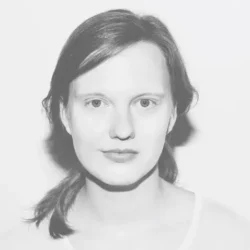The Tanzarchiv is the present
Antonia Gersch
The focus of my research is the connection between contemporary performance and historiographical practice. I am interested in the potential of choreographic works to be seen from two perspectives: as an artistic contribution to the revision of a dance history that is yet to be written, but also as part of contemporary production.
But why is dance history specifically such an empty space? In dance studies, voices are be ingraised that are critical of the ephemeral nature of dance. Dance is not more ephemeral than any other human activity. And yet one can attribute a specific characteristic to dance that is closely linked to its transmission. Especially to the body memory of the dancers themselves, whose bodies are the bearers of their history.
For a long time, the Western way of thinking has been oriented towards a linear progression of history. Different theories of history and time have rejected this idea. The historian R. Koselleck extracts the concept of “Schichten”(layers) from the German word “GeSchichte”-history -and takes the spatial metaphor of rock layers as a model. The philosopher P. Ricoeur develops the idea that there is no future, no past and no present time, but rather a three-fold present. In this present time, the future, the past and the present merge and different times can coexist. Like the Minkowski space in theoretical physics which illustrates in the observer how past and future are related to each other, by coexisting in the present. In my research, I briefly discuss Netta Weiser’s radio choreography, in which she is inspired by the dancer Hanna Berger. Several layers of time coincide, which only become real in the present. Hanna Berger is present, because Netta invites her to be present. The dependency of both is not hierarchical but reciprocal. Different times and places are layered into one another and the imagination of the listener also takes a position of its own. The experience of dance history becomes an experience in the here and now,which can be seen as an experience itself. In this way, a memory is created of times that one has only imagined one self to be in.
